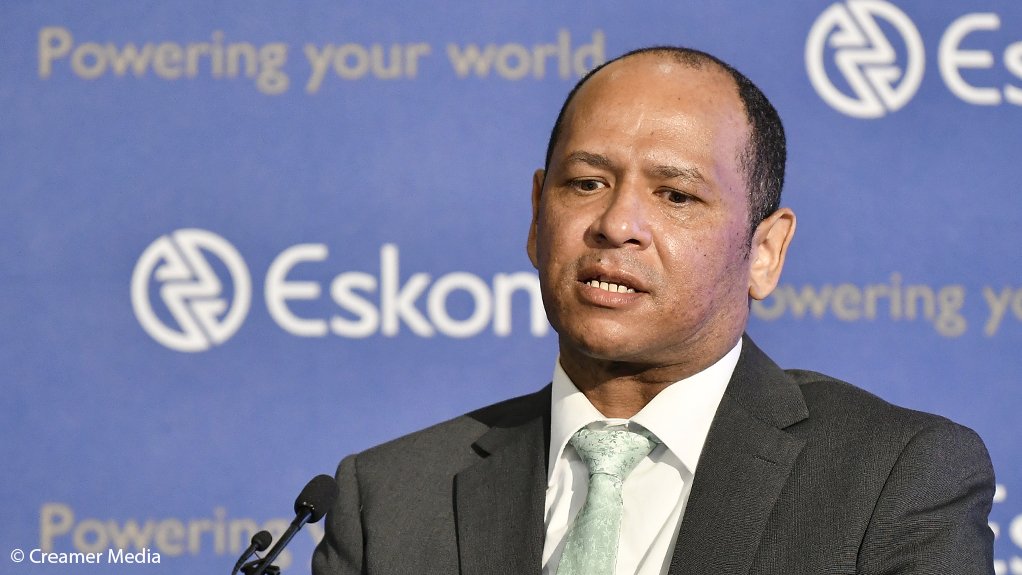Eskom is aiming to limit loadshedding to Stage 4 during the summer months to the end of March by restricting unplanned breakdowns to 14 500 MW during what is also its high-maintenance season, when planned outages of about 7 000 MW will be implemented.
Interim CEO Calib Cassim indicated on Wednesday that the addition of 2 880 MW from the Kusile power stations would be critical for narrowing the prevailing supply/demand gap in the coming months and providing the space required for maintenance.
It would also be crucial to limit the use of the expensive diesel-fuelled open-cycle gas turbines (OCGTs), which were used extensively during winter to limit the intensity of loadshedding.
The utility has spent R11.9-billion since April 1 to operate its own OCGT plants at Ankerlig and Gourikwa, against a R30-billion budget for both its plants and the private OCGT facilities.
Despite this, loadshedding was implemented for 153 days during winter, with Stage 6 loadshedding implemented on 39 of those days.
No similar summer reprieve will be provided by the Koeberg nuclear station, however, where Unit 2 will be removed from service in early November once Unit 1 resumes operations on November 3.
Unit 1 has been out of service since December 10, when it entered what was originally meant to be a 180-day outage to facilitate the much-delayed replacement of its three steam generators; a requirement for it securing a licence to operate for a further 20 years.
There is no certainty yet, however, on whether Koeberg will secure a Long-Term Operation licence ahead of the expiry of its current 40-year licence in July next year.
There is also no clarity on whether the regulator will agree to separate the Unit 1 and Unit 2 licences to reflect the fact that Unit 2 entered operation in November 1985, a year and a half after Unit 1.
Generation head Bheki Nxumalo confirmed again that Unit 3 at Kusile could be commissioned immediately once Eskom secured all its environmental approvals.
Ahead of Eskom’s summer outlook presentation, Forestry, Fisheries and the Environment Minister Barbara Creecy upheld the decision of the National Air Quality Officer to permit the temporary operation of the Kusile coal power station using temporary stacks that bypass the flue gas desulphurisation pollution-control plant.
Therefore, Eskom was now only awaiting a decision by the Nkangala district municipality relating to an Atmospheric Emission licence appeal.
Nxumalo expressed optimism that it was still possible, once all the approvals were secured, to meet the revised return-to-service schedule of October 14 for Unit 3, followed by October 30 for Unit 1 and November 30 for Unit 2.
Nevertheless, he highlighted that the units had been idle for nearly a year and that there were likely to be “teething issues” during commissioning.
Besides Kusile, Eskom also expected to secure 1 500 MW from the troubled Tutuka station, which operated for most of winter with only one unit.
Nxumalo reports that three Tutuka units are currently operating and producing 1 600 MW.
He also reported solid progress in Duvha and Majuba’s turnarounds, but said Kendal still required attention.
Transmission head Segomoco Scheepers said that, should breakdowns be restricted to below 14 500 MW during summer, there would be 116 days of loadshedding across the 213 days until the end of March and that the intensity of such cuts would be restricted to Stage 4 or below.
Should breakdowns rise to 16 000 MW or 17 500 MW, however, the number of loadshedding days would rise to 187 and 211 respectively, while the intensity of the cuts would be between Stages 5 and 7.
EMAIL THIS ARTICLE SAVE THIS ARTICLE ARTICLE ENQUIRY
To subscribe email subscriptions@creamermedia.co.za or click here
To advertise email advertising@creamermedia.co.za or click here











